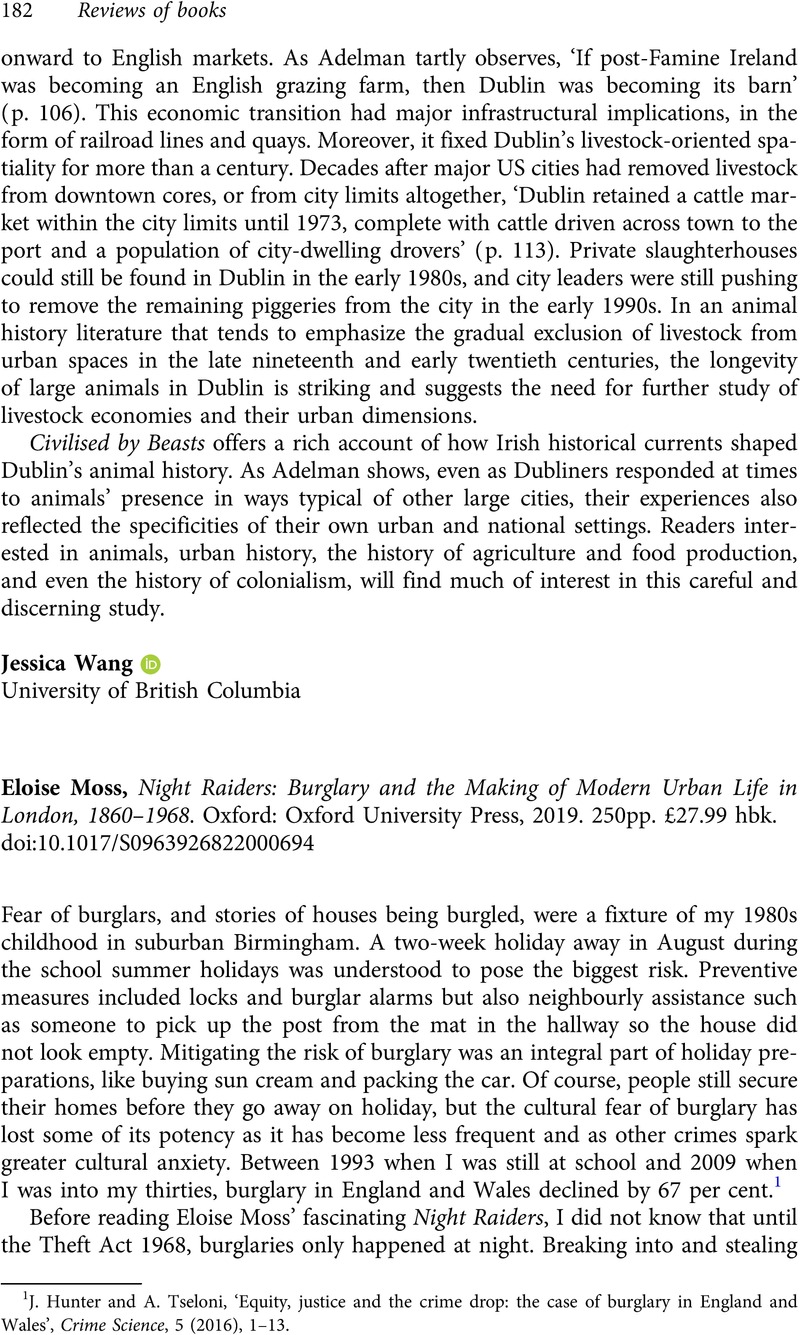No CrossRef data available.
Published online by Cambridge University Press: 27 January 2023

1 Hunter, J. and Tseloni, A., ‘Equity, justice and the crime drop: the case of burglary in England and Wales’, Crime Science, 5 (2016), 1–13CrossRefGoogle Scholar.
2 Garland, D., The Culture of Control: Crime and Social Order in Contemporary Society (Oxford, 2001)CrossRefGoogle Scholar.
3 Tseloni, A., Farrell, G., Thompson, R., Evans, E., and Tilley, N., ‘Domestic burglary drop and the security hypothesis’, Crime Science, 6:1 (2017), 1-16CrossRefGoogle ScholarPubMed.